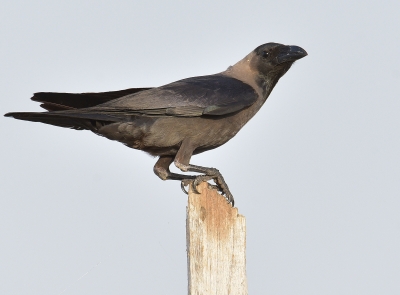
The Common Rock Thrush (scientific name: Monticola saxatilis) is a migratory bird that breeds in a range extending from southern Europe and northwestern Africa to Mongolia, spending winter in East Africa In the Kingdom of Saudi Arabia, it is considered a regular migrant, yet it is uncommon. It may be found solitary, in pairs, or in scattered groups.
Although the Common Rock Thrush is not globally threatened with extinction, the worldwide population of the group it belongs to is declining, and it is nearly threatened regionally.
Description of the Common Rock Thrush
This bird has a long bill and a short tail, with physical characteristics differing between the male and the female. Its size ranges from sixteen to nineteen cm, and its weight from forty to sixty-five g.
Habitat of the Common Rock Thrush
The Common Rock Thrush can occupy virtually any habitat while migrating, especially areas with dense vegetation, rocky places, public parks, large buildings, and ruins.
On a global scale, this bird breeds in a range extending from southern Europe and northwestern Africa all the way to Mongolia, and spends the winter traveling between four thousand and nine thousand km to the south and southwest in East Africa. In the Kingdom, it is a regular migrant, though uncommon throughout the country, particularly during spring.
Behavior of the Common Rock Thrush
The Common Rock Thrush prefers hiding and is usually active during the day, traveling at night. It can be found alone or in pairs, and sometimes in scattered groups passing through the Kingdom.
The bird feeds on insects and invertebrates, such as snails and worms, in addition to small lizards and frogs it can catch. It also consumes some fruits, especially berries. It typically spots its prey from a perch and then swoops down on it or chases it if it is an insect, whereas it eats fruits directly from the tree.
Related quizzes
Related articles


